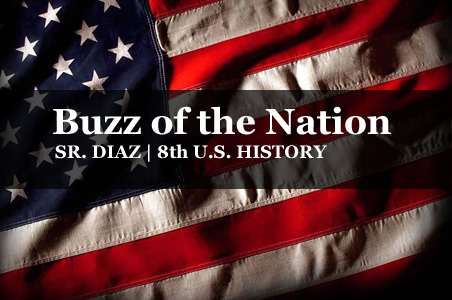Whiskey Rebellion
No one named Whiskey here.Watch and read the selections below to answer the following questions.
What similarities do Shays' Rebellion and the Whiskey Rebellion share?
How did the national government react differently in the Whiskey Rebellion than Shays' Rebellion?
Context: Transporting crops to market was long and tedious. Also, farmers could only carry a limited amount of grains to market at a time, before they would spoil. It was much more profitable to distill the grains into liquid (alcohol/whiskey) and then take it to market. This way, they could carry more in a wagon, make more money, and spoiling was not a problem.
The Whiskey Rebellion
Nearly twenty years after the revolutionary War began, the United States government faced a small-scale revolution by some of its own citizens. As in the previous war, taxes were a central issue. And Alexander Hamilton understood that putting down this rebellion was critical to the life of the nation.
In order to create a self-supporting and effective government, Treasury Secretary Hamilton knew he needed to find a steady source of revenue. He proposed an excise tax on whiskey produced in the United States, and Congress instituted the levy in 1791. In general, the citizens of that time felt negatively toward the idea of taxation. The farmers of western Pennsylvania, many of whom distilled whiskey and profited from its sale, proved outright hostile to the idea.
In July of 1794, a force of disaffected whiskey rebels attacked and destroyed the home of a tax inspector. The rebellion grew in numbers, if not in actions, and threatened to spread to other states. Hamilton knew that the presence of a large and potentially hostile force in Pennsylvania could not be tolerated. If the government were to survive, it would have to show itself capable of keeping control.
Hamilton advocated the use of military force; President George Washington instead put state militias on the ready and sent in negotiators. When talks proved fruitless, Washington acquiesced to Hamilton's view. A force of 13,000 militia troops, led by Hamilton and Virginia governor Henry Lee, marched into western Pennsylvania.
By the time the federal force arrived, the rebellion had collapsed and most of the rebels had fled. Two men were convicted of treason and later pardoned by Washington. Alexander Hamilton was elated. The fledgling federal government had proven it could keep order -- a necessity if the U.S. was to avoid instability. But many, in particular Thomas Jefferson, thought that this resort to military force was a dangerous mistake. It convinced them that Hamilton was a dangerous man.
Citation: http://www.pbs.org/wgbh/amex/duel/peopleevents/pande22.html

No comments:
Post a Comment